Getting Started with SMD, resources and common components
What to pick? What to chose? Your standard reference to the world of SMD parts.

What is it?
This is a list of all common electronics components that I use.
Why is it cool?
It is my reference when I am picking out components, and it helps when I have a standard set of components that I use.
Power
I use Microchip's LDO selector for my power requirements: http://www.microchip.com/ParamChartSearch/Chart.aspx?branchID=90004
MIC5209
500mA, SOT223, good for powering beefy components if heat dissipitation is a concern, has a higher range of voltages (16V) than the MIC5219.
MIC5219
500mA, SOT-23-5, small land pattern, a good selection for most general purpose uses, smaller voltage range (12V) than the MIC5209.
MIC5504
300mA, SOT-235, small land pattern, slightly less power. Good if you plan to put switches in the line and they are low power switches. Cheaper, smaller dropout voltage.
MCP1700
250mA, SOT-23, cheap, small land pattern, good when you don't have a lot of room.
MCU
Some considerations for MCU costs are that it should have a hand-solderable variant, and should be reasonably well supported. The cost is not a big issue as compared to the ease of programming and development, but a low cost is a definite boon. Here I chose to go with the SAMD series of chips as they are the ARM chip of choice for Arduino, and I find ATMEL Studio to be a relatively conveninent option, especially because of the .
I really like TI's series of TIVA chips because they are so well documented with examples, which are readily available. However, they do not make 'lesser' versions of these chips, and I don't really need a 64 pin chip when all I want to do is to blink a couple of LEDs.
ATSAMD10D14
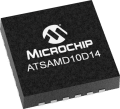
This board is good for projects that require only a simple signals. Eg. LED animation, Neopixel controller. 16KB memory, 4KB RAM. $1.24/unit. Cheap, plenty of memory and GPIO pins. Good for simple projects, and better than using an Arduino/ATMEGA/ATTINY. Has easy-to-solder SSUT parts. Also has the tiny QFN-24 option if you really need the space, doesn't go much smaller than that.
ATSAMD21E17A
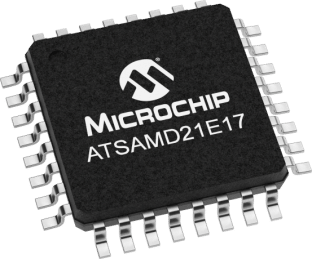
128KB memory, 16KB RAM. $2.30/unit. Very available, a huge amount of memory, and has the relatively easy to solder TQFP-32 part, if your board is space-challenged, it is also available in a tiny QFN-32 footprint.
ATSAMD51G19A
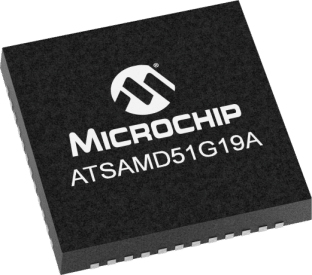
The latest and the greatest. 512KB memory, 192KB RAM. $4.30/unit. Basically all your code that you squeezed in the SAMD21 fits onto the RAM of the SAMD51. The smallest version comes as a QFN-48 package.
Resistors and Capacitors
I like the 0603 size because I find that those are the smallest resistors and capacitors that I can handle comfortably. If you are going to do a lot of hand soldering, this is a very important aspect. However, keep note that larger capacitor values are more common with larger sizes. Buy the cheapest ones you can find, and make sure that they are >4V, for a good safety margin. The prices don't differ that much from 6.3V to 16V, so if you can snag a higher voltage tolerance, I'd say do it.
There are two approaches to this. You can buy sample packs from Aliexpress, which will definitely net you a nice range of capacitors, or accumulate them as your projects grow, which will get you the capacitors you need. I do like the growth method because I tend to know what capacitors I need for a given project, and they are usually the same few suspects. You also get them knowing the specs like the voltage range, which a sample pack from China does not avoid. Then again, I've been saved many times when I have forgotten to buy a critical capacitor from the sample pack so both approaches do have their benefits.
For reference, a set of capacitors that I use regularly and almost exclusively are 0.1uF, 1uF, 10uF for power decoupling, and 22pF for crystals. For resistors I use 1k resistors for LEDs and 10k resistors for pullups.
Crystals
Generic external oscillator, Abarcon, ABS7
32.768kHz, 12.5pF, small package, paired with 22pF capacitors, good for many ATSAMD chips that use Phase-Lock Loops (PLL) to clock at 48Mhz.
Switches
Generic power switch, JS202011SCQN, CK
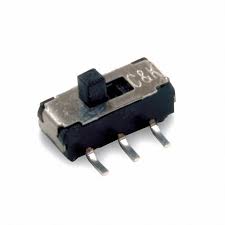
This is a big gull-wing SMD switch that is good for up to 0.3A. I like this particular switch because it is easy manipulate, and is good for toggling.
Generic reset switch, TL6330AF200Q & variants
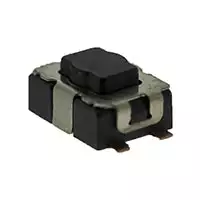
Standard reset button. Small and compact. Some variants can be a bit flat and hard to press at times. Make sure that you solder these on towards the end because the hot air tends to melt the plastic buttons.
